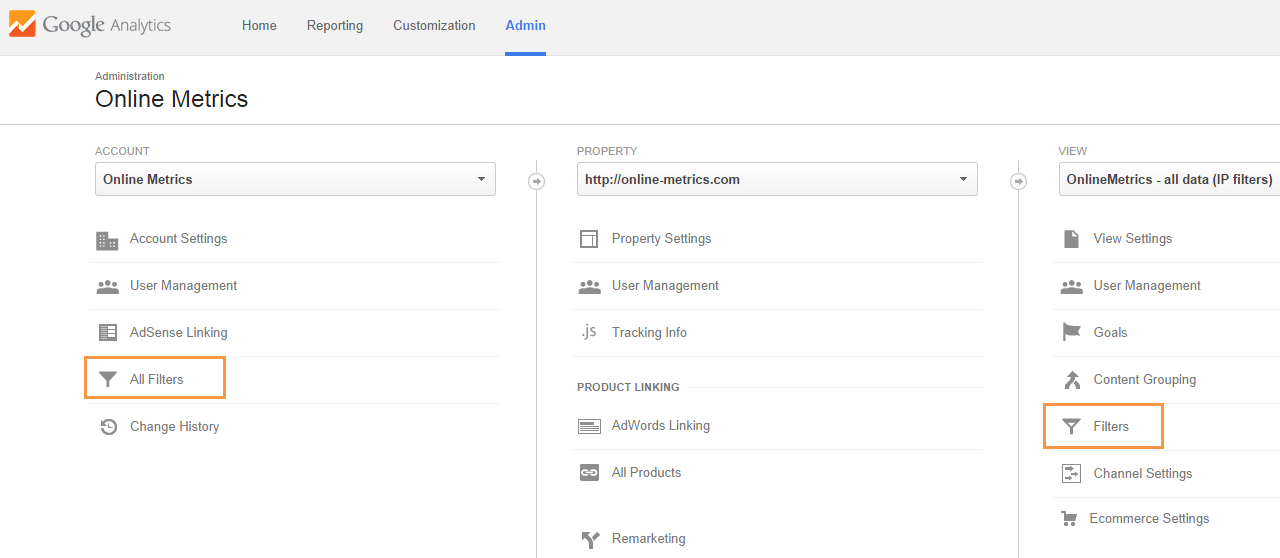Fascination About In Which Order Does Google Analytics Filter Data
Wiki Article
The Only Guide for In Which Order Does Google Analytics Filter Data
Table of ContentsAn Unbiased View of In Which Order Does Google Analytics Filter DataExcitement About In Which Order Does Google Analytics Filter DataThe Buzz on In Which Order Does Google Analytics Filter DataThe Main Principles Of In Which Order Does Google Analytics Filter Data 10 Easy Facts About In Which Order Does Google Analytics Filter Data DescribedHow In Which Order Does Google Analytics Filter Data can Save You Time, Stress, and Money.
io" is the web site and if I most likely to the homepage and also click a few other pages like signup web page, it shows me in the real-time report popping-up as exactly how we established in the filters. This web page is the of internet site as well as you can see the sub-domain highlighted as.
Comparable to the previous procedure, we must produce a new filter as discussed in the last actions - In Which Order Does Google Analytics Filter Data. in this new filter, I'm calling it as and also I'm picking Then I'm inputting the filter pattern as In this filter pattern, the pipe sign () is consisted of to connect any various other hostname that you intend to include along with the other hostnames
Unknown Facts About In Which Order Does Google Analytics Filter Data
This is just how you can go inspect your site and resurgence sight in real-time records. The real-time report currently reveals the modifications that you made when creating that filter. In this instance, the Fractured page clarifies regarding link of the web page i. e when the Page link being repeated the exact same, excluding reduce or any minute aspects.Now develop a brand-new filter and I call it as. Pick and choose the filter areas.

All About In Which Order Does Google Analytics Filter Data
The complying with instructions will walk you via the procedure: Create a brand-new Google Spreadsheet (or open an existing one). From the add-on description page, click the "+" in the top right corner to add this add-on to your spreadsheet.Click "Approve". The add-on is currently set up. A "Google Analytics" submenu must now show up in the Add-ons menu. Reports can be produced manually or with the assistance of the add-on's record creation device. To use the device, pick "Attachments" > "Google Analytics" > "Develop a New Report" from the menu bar.
This is willful. In Which Order Does Google Analytics Filter Data. The device is implied to help obtain you began and provide you with the details you may not understand off the top of your head. The remainder of the areas will need to be gone into by you. If you have any type of questions concerning what to place in each field, browse around this web-site see the referral at the base of this page.
Fascination About In Which Order Does Google Analytics Filter Data
It can be a sheet in the spreadsheet you're additional hints currently in, or a various spread sheet altogether (as long as you have edit access to that spread sheet). To publish the results to a different spread sheet copy the spreadsheet URL as well as paste it right into the cell to the right of the "spreadsheet-url" parameter.This opens a report scheduling dialog where you can transform organizing on and also off, and also set how often your record will certainly run. To transform organizing on, check package classified "Enable records to run automatically." When organizing is enabled you can use the pick dropdown to control the moment and frequency.
When organizing reports, make sure there is a lot of time between when you create the routine as well as when the routine is meant to run. If it's as well near to the very first incident of the scheduled time, there's a possibility those check my reference records will certainly be delayed till the following incident. It's typically best to leave a minimum of a one-hour buffer.
Everything about In Which Order Does Google Analytics Filter Data
Covert parameters are innovative alternatives that are not needed for many records and also are concealed by default. You can utilize these parameters by un-hiding the rows 14-16 in the Record Setup sheet. Name Description This is the record name. It will also be the name of the sheet where the report data is written.The adhering to expression returns the last day of the previous month: =EOMONTH(TODAY(), -1) The end date for fetching Analytics information. Demands can specify an end day formatted as YYYY-MM-DD, or as a relative day (e. g., today, the other day, or Ndays, Ago where N is a positive integer). You can likewise use Sheets date features to define this value programmatically.
Metrics can be specified in one of 2 formats: For example, all of the adhering to are legitimate values for the Metrics specification. ga: sessions, ga: bounces ga: sessions ga: jumps ["expression": "ga: sessions/ga: individuals", "pen name": "Sessions per Customer", "format, Type": "DRIFT", "expression": "ga: overall, Events/ga: pageviews", "alias": "Events per Pageview", "format, Kind": "FLOAT"] For most make use of situations, a checklist of statistics IDs is the simplest means to specify the Metrics criterion.
Not known Details About In Which Order Does Google Analytics Filter Data
Name Description A listing of dimensions to inquire. Measurements can be defined in one of 2 styles: For instance, all of the following are valid values for the Metrics parameter. For the majority of make use of cases, a list of dimension IDs is the simplest way to define the Capacities criterion.
Report this wiki page